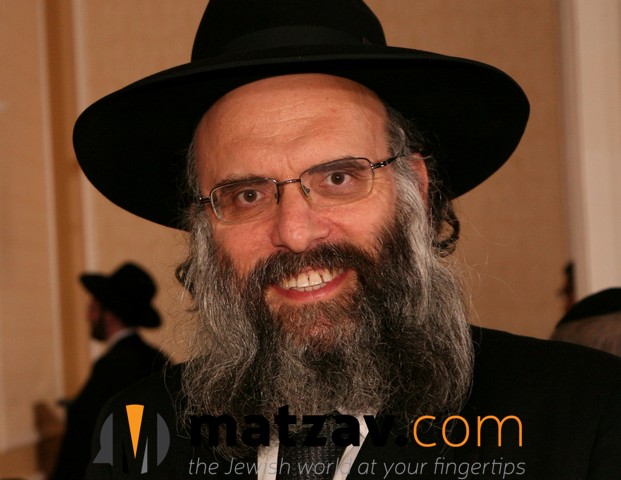
By Rabbi Yehoshua Berman
וידבר אלקים Why is the name Elokim the one which is employed for the aseres ha’dibros? Wouldn’t it have made more sense for it to have been the sheim Havayah? Rashi brings from Chazal that the implication of the name Elokim is dayan lipara, a judge who can exact punishment. In the sefer, Pischei Shearim, Rav Yitzchak Isaac Chaver is quoted as saying the following. Chazal tell us that the 26 verses of ki l’olam chasdo correspond to the 26 generations preceding Matan Torah during which the world was maintained solely on the basis of Hashem’s great kindness. Once the Torah was given, though, the existence of people and everything that happens to them was no longer solely on the basis of Hashem’s boundless kindness. Rather, at that point there began a Divine interaction with the world, as it were, in the context of which Hashem relates to the world on the basis of people’s conduct, particularly the conduct of the Jewish People. A new dynamic was introduced: justice. A dynamic ofmidas ha’din. Not that Divine mercy was rendered obsolete, but that they are intertwined, and any goodness and blessing that would come into the world from this point on would have to be justifiable from the perspective of justice. That is why it is precisely the name Elokim which appears in the context of the aseres ha’dibros because Elokim is the name of Hashem that reflects justice, midas ha’din, and that came into the world through the giving of the Torah.
I heard an elaboration on this concept. As we know, Adam Ha’Rishon was created b’tzelem Elokim, in the likeness of the Almighty. The Nefesh Ha’Chaim explains that what this means is that just as the name Elokim indicates that Hashem is the master of all the forces that exist in the universe, Hashem made man master of the forces of the universe, in the sense that every action that a person does in this world corresponds to a particular force in creation. A positive action on man’s part brings about a positive reaction, and a negative act, chas v’shalom, brings about its reaction. Now, the Chovos Ha’Levavos says that, although all actions can apparently be broken down into the three categories of mitzvah, aveirah, and reshus, in truth, all matters of reshus (so-called neutral activities) really fall under either the mitzvah or aveirah category. Any reshus matter which is necessary and, as such, becomes an adjunct to one’s avodas Hashem, is in itself a mitzvah – as the pasuk says, b’chol derachecha da’eihu, know Him in all of your ways. And that which in no way shape or form serves the purpose of avodas Hashem is classified as the opposite. Accordingly, every single action that a person carries out in this world is either judged as a mitzvah or an aveirah. Every single action is either serving the purpose of bringing goodness and blessing into the universe, or, chas v’shalom, the opposite.
Of course, the same applies to speech. And, in fact, when it comes to speech the effect is, in a certain sense, even more pronounced, since, as the Nefesh Ha’Chaim explains, speech corresponds to the higher facet of man’s spiritual makeup called ruach. Positive forms of speech and manifestations of speech that are mitzvos have their positive effect and bring about goodness and blessing in a higher realm; and negative and sinful forms of speech likewise carry their negative effect on those selfsame higher realms. And the same positive/negative dichotomy applies to thought, which corresponds to the highest realm of man’s spiritual constitution.
This whole system was made possible only through the giving of the Torah. It is through the taryag mitzvos – the 248 positive commandments and 365 negative commandments which correspond to the limbs and sinews of the human body, as well as the days of the year – that man is given complete mastery over all the forces that exist in the universe. Everything that Hashem placed under man’s influence, it is through the taryag mitzvos that it is so. And there is no force in the entirety of creation that was left out of this system of being under the influence of man through his relationship with thetaryag mitzvos. Hence, the name Elokim is that which appears by Matan Torah. The Almighty – master of all the forces of the universe – spoke, and thereby did man truly and fully become a tzelem Elokim.
As Rav Yitzchak Isaac Chaver said, when the Torah was given, that is when the system of Divine justice began – that man’s existence and what happens with him is a function of merit or demerit, a true justice system; and the underlying mechanism of that system is that Hashem forged man into a tzelem Elokim. He placed under his influence – by dint of all his actions, words, and thoughts – all the forces of the universe. That every single thing that a person does in this world is bound up with a certain force that exists in creation, and if what the person did was positive than it will have a positive effect, and if what he did was negative, then it will have a negative effect.
Nowadays, the majority of the mitzvos are not applicable. The Rambam, in Sefer Ha’Mitzvos, counts only 60 positive commandments that are applicable to us nowadays. On the surface, that would seem to imply that our status and power as a tzelem Elokim has taken a tremendous, tremendous hit. Indeed, Chazal clearly say that, upon the destruction of the Beis Ha’Mikdash, a massive amount of blessing and goodness vanished from the world. At the same time, there is a very important point to be aware of. It is a point which is made by the sefer, Derech Pikudecha, as well as the Beis Ha’Levi and the Eglei Tal. Every mitzvah has two facets to it: the facet of the concrete execution thereof and the facet of the study thereof. Studying the laws, definitions, parameters, and implications of a mitzvah is of course a fulfillment of the general mitzvah to study Torah; but, beyond that, it also bears relevance to the actual fulfillment of that particular mitzvah. For example, most people will never have the opportunity to fulfill the mitzvah of pehter chamor (redeeming a first-born donkey). But does that mean that they have no connection to that mitzvah? Does it mean that the mitzvah of pehter chamor has no relevance to them? Definitely not! For even someone who will never have the opportunity to actually redeem a first-born donkey can still be connected to this mitzvah by learning its laws in Maseches Bechoros. And so too with every mitzvah in the Torah. The way the Derech Pikudecha puts this is that there is an obligation to carry out every single mitzvah on all three levels: thought, speech, and action. And even if one is for, whatever reason, unable to fulfill a particular mitzvah on the level of action, concludes the Derech Pikudecha, he can still fulfill it on the level of thought and speech through learning its halachos, thinking about them, delving into them, and formulating novel angles of understanding them.
This is one of the reasons why it is imperative to learn through the entire Torah at least one time, so that one can ensure that the structure of his tzelem Elokim becomes full and complete and does not remain lacking in any of its composite parts. By learning through the entirety of Torah one fulfills not only the basic mitzvah of talmud Torah, but also connects himself to every single one of the mitzvos of the Torah and thereby completes his tzelem Elokim.
My rebbi, Rav Yisrael Elya Weintraub zt”l, elaborated on yet another point in regard to the fact that it says Elokim by the aseres ha’dibros. The Nefesh Ha’Chaim says that if there would be no Torah study in the entire world – even for but just one fleeting moment – the entirety of creation would immediately revert back to tohu va’vohu (utter nothingness). This too works on the basis of the tzelem Elokimmechanism; that Hashem put a reflection of his power into the hands of man. Hashem, in his great kindness, is mechadesh b’tuvo b’chol yom tamid maaseh breishis. Every single moment, explains the Nefesh Ha’Chaim, Hashem is continually willing the universe to be, and if not for that constant reality of the Almighty’s will that the world should be, it would immediately cease to exist. And in this sense, as well, Hashem imparted to man a reflection of his power. This is the highest expression of tzelem Elokim – unique to the mitzvah of Torah study – which places in the hands of man the power and responsibility to keep the universe going through the uninterrupted power of talmud Torah which is k’neged kulam.
(Maamarei Chag Ha’Shavuos)
~
Why is there no chatas on Shavuos? In Maseches Rosh Ha’Shana (daf 32), Rabbeinu Chananel quotes a Yerushalmi that says the reason why there is no chatas (sin offering) on Shavuos is because true kabbalas ha’Torah (acceptance of the Torah) atones even more than Yom Kippur. Yom Kippur requires a chatas, but Shavuos, with its power of kabbalas ha’Torah, does not. We don’t have any sins that need atonement on Shavuos if we truly and wholeheartedly accept the Torah. And it is not just the original kabbalas ha’Torah that took place at Maamad Har Sinai that contains this power of atonement, for if that would be the case, then in all subsequent years on Shavuos we would need a chatas. And yet we see that the Torah does not require a chatas on any Shavuos, any year. That means that the kabbalas ha’Torah which takes place on Shavuos every year has this power. Chazal tell us that, at Matan Torah, the Jewish People reverted back to the state of Adam Ha’Rishon kodem ha’cheit (before he ever sinned). Meaning, at Matan Torah, we did not have a yeitzer hara. And every Shavuos there is a return to this state of ein od milvado, where only the reality of Hashem is what’s relevant, and sin is simply impossible. (From the notes of Reb Naftali Eichen)
~
Quotables “If you have a choice between learning 50 blatt Gemara or learning with someone who needs some help, most likely you should opt for the latter because that is probably what Hashem wants you to do.”
~
Vignettes As a first-year bachur, my interest initially revolved around having fun. I thought of a fantastic idea: I’d do something that other bachurim wouldn’t dream of doing. One night seder, I plunked myself down right next to the vaunted Rebbeh, as the bachurim would often refer with reverence to Rav Twersky, and asked, “Rebbi, can we learn together?” He smiled at me and said, “I don’t know if we can have a regular, set session; but any time you would like to speak with me in learning, I would love to do so!” Even that was pretty exciting for a first-year bachur hot off the press, so I started going over at some point every night to sit next to Rav Twersky and speak to him in learning. It didn’t take too long, though, for the excitement of being so bold to wear off, and in short order I discontinued that nightly ritual. Rav Twersky’s reaction, though, was also not long in coming. After a few days went by without me going over to him, he spotted me in the yeshivah hallway one day. With a big smile, he looked at me and said, “Where have you been? I miss speaking with you!” (A talmid)
To receive these Divrei Torah directly to your inbox, or to make a dedication, please email [email protected]











